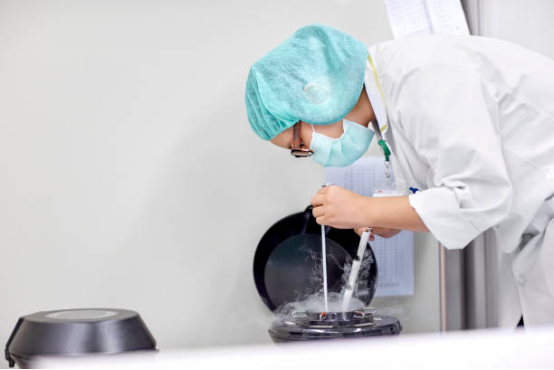Assessing the Value of Sperm Donations: How IVF Clinics Determine Pricing
Sperm donation plays a vital role in assisted reproductive technology (ART), especially in in vitro fertilization (IVF). While donors receive financial compensation for their contributions, the true value of sperm extends beyond the initial payment. IVF clinics assess multiple factors when determining sperm pricing, ensuring high-quality samples for successful fertility treatments. Understanding these factors can help both donors and recipients make informed decisions.
Sperm donation plays a vital role in assisted reproductive technology (ART), especially in in vitro fertilization (IVF). While donors receive financial compensation for their contributions, the true value of sperm extends beyond the initial payment. IVF clinics assess multiple factors when determining sperm pricing, ensuring high-quality samples for successful fertility treatments. Understanding these factors can help both donors and recipients make informed decisions.

The Role of Sperm Donation in IVF
Sperm donation provides individuals and couples facing fertility challenges with an opportunity to conceive. The sperm can be sourced from either anonymous or known donors, depending on the preferences of the recipient. This process is particularly beneficial for single women, same-sex couples, and those dealing with male infertility.
The Sperm Donation Process
1. Screening and Medical Evaluation
Donors must undergo extensive medical, genetic, and psychological screenings before their sperm is accepted. This process helps identify potential health risks and hereditary conditions while ensuring the donor’s mental readiness. Clinics also evaluate lifestyle factors such as smoking, alcohol use, and diet to select high-quality donors.
2. Sperm Collection and Laboratory Testing
Once approved, donors provide semen samples that undergo rigorous testing. Key factors such as sperm count, motility, and morphology are analyzed to determine if the sample meets the high standards required for IVF.
3. Cryopreservation for Future Use
Sperm that passes quality control is cryogenically frozen for long-term storage. This preservation process allows clinics to maintain a reliable sperm bank, ensuring patients have access to high-quality sperm when needed.
What Determines the Value of Sperm Donations?
1. Sperm Quality and Health Factors
The most significant factor influencing sperm pricing is its biological quality. Samples with high motility, proper morphology, and strong concentration are more desirable. A donor’s overall health, age, and lifestyle choices also play a crucial role in determining sperm quality.
2. Donor Background and Unique Characteristics
A donor’s education, career, and personal attributes can affect pricing. Those with advanced degrees, athletic abilities, or artistic talents may receive higher compensation. Additionally, sperm from underrepresented ethnic groups may be priced at a premium to meet diverse patient needs.
3. Regional Demand and Market Differences
Geographic location influences sperm pricing, with clinics in major metropolitan areas often offering higher compensation due to increased demand for fertility treatments.
4. Legal and Ethical Considerations
Sperm donation laws, including regulations on anonymity and parental rights, impact pricing. Areas with stricter legal requirements may have higher operational costs, affecting the overall valuation of sperm donations.
IVF Clinic Costs and Considerations
The cost of sperm extends beyond donor compensation. IVF clinics invest in:
- Donor Screening and Testing:Extensive evaluations costing hundreds of dollars per donor.
- Sperm Processing and Analysis:Laboratory assessments ranging from $200 to $500 per sample.
- Cryopreservation and Storage:Annual maintenance fees between $200 and $400 per sample.
Conclusion
The financial worth of sperm donations is determined by several factors, including sperm quality, donor characteristics, market demand, and legal considerations. IVF clinics must carefully evaluate each sample to ensure the best possible outcomes for patients. As demand for fertility treatments grows, the economics of sperm donation remain a critical component of reproductive medicine, shaping the future of ART and assisted conception.